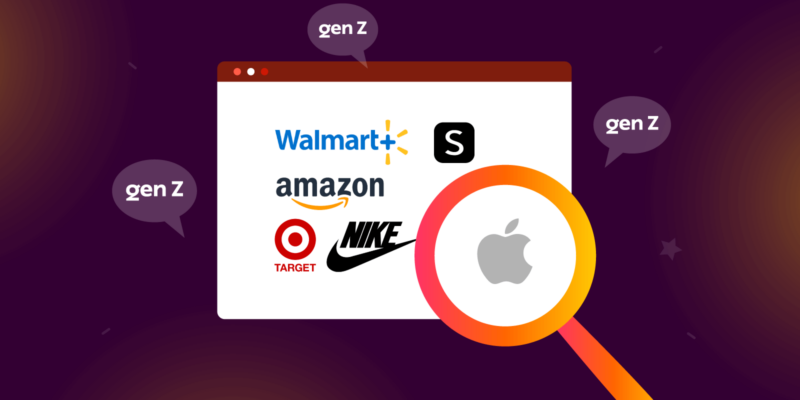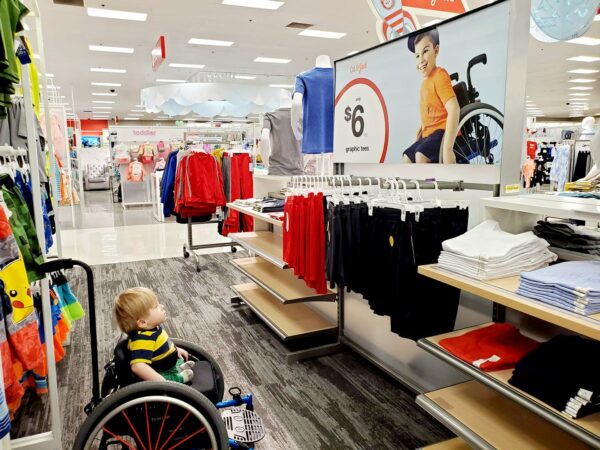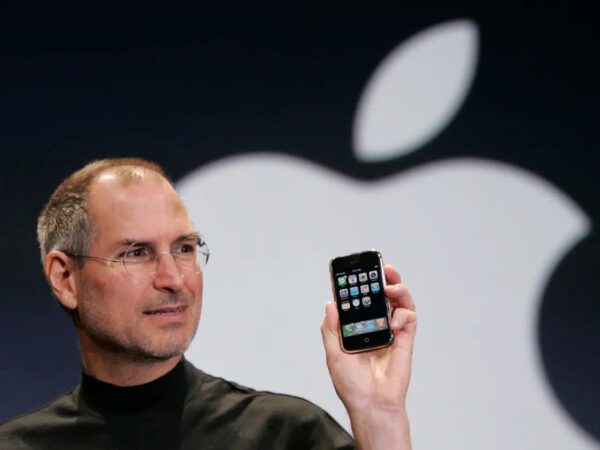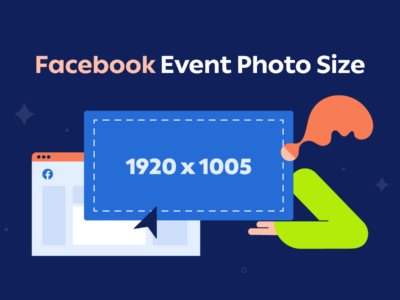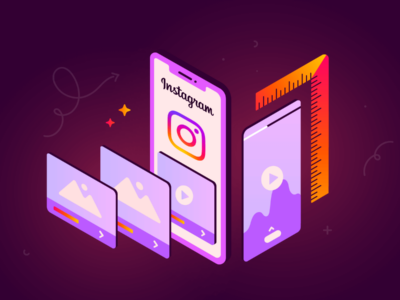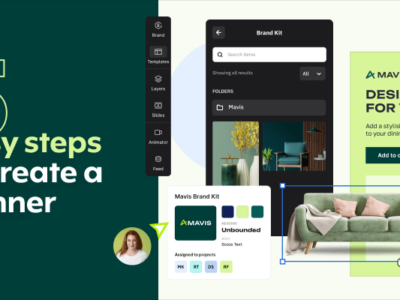In July 2022, Creatopy released its first whitepaper titled What Clicks with Gen Z, in which we ran a survey asking over 1,000 individuals between the ages of 18 and 26 about their shopping habits, opinions on advertising, and online behavior.
Among the many conclusions we drew, we saw that the top six brands that seem to resonate most with Gen Z are Nike, Shein, Target, Walmart, Amazon, and Apple.
Download the Whitepaper: What Clicks with Gen Z here:
In this article, we’re going to laser focus on these six brands and analyze how they communicate with Gen Z. The aim is to analyze their Gen Z marketing strategies and try to extract a valuable lesson from each.
Is it really all about flashy TikToks, or is there more to the story?
Note: It’s true that it takes more than six lessons from six brands to build your own marketing strategy. You have to do more than simply donate to a cause or engage with a trending social media platform. That being said, we organized these five lessons based on what we learned about Gen Z consumers through our survey in which we directly asked Gen Z individuals their preferences and opinions. These six lessons contain valuable tips backed up by our survey results.
Lesson 1: Support causes sincerely
Lesson 2: Lean into social media & user-generated content
Lesson 4: Make them an offer they can’t refuse
Lesson 5: Always optimize your website (especially on mobile)
Lesson 6: Establish & maintain trust
Lesson 1: Support Causes Sincerely
In our survey, 47,45% of respondents said they prefer brands that take a stand on social issues like the environment, feminism, LGBTQ rights, and racial discrimination.
Nike is one such brand.
When you think about Nike, the first thing that probably comes to your mind is the iconic checkmark logo, its slogan, or its famous Air Jordan shoe line.
But I’m willing to be that the second thing you think about is their Just Do It campaign with Colin Kaepernick from 2018.
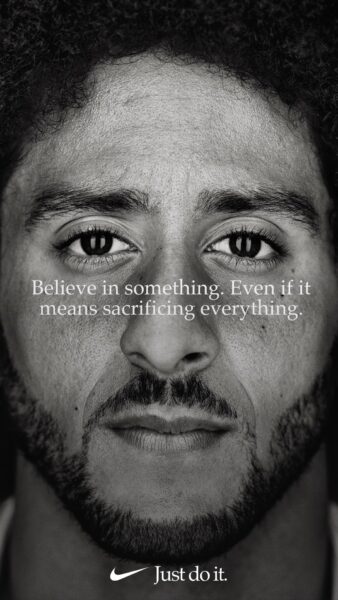
Kaepernick is a former NFL quarterback and currently a free agent whose name started trending in 2016 when he knelt during the US national anthem that was played before a game as a form of protest against police brutality and racial inequality.
Two years later, Nike teamed up with him for their iconic Just Do It campaign, in which they invoked the importance of believing in something and fighting for it despite the sacrifices they entail.
In the TV spot, Kaepernick mentions important sports figures like Serena Williams and LeBron James as examples of people who took people calling their dreams crazy as a compliment and worked endlessly to make them come true.
As a result of this massive campaign, Nike saw a 31% increase in sales, according to Time Magazine.
Although this is the most recent example of Nike getting involved in activism, it’s not their first time.
In 2012, their powerful Voices campaign approached the subject of gender equality. In 1995 their Just Do It campaign included a TV spot featuring openly gay and HIV-positive runner Ric Muñoz, combating stigmas against the LGBTQ+ community affected by the illness. In 1989, they released a spot featuring Paralympian Craig Blanchette, advocating for people with disabilities.
In fact, their very first Just Do It TV spot tackled the subject of ageism by featuring 80-year-old Walter Stack, a prominent figure in the Bay Area running community, known for running approximately 62,000 miles in his lifetime.
Nike teaches us that if you want to connect with your audience, you should get involved with causes and social issues they care about.
This does not mean you should blindly pick a random cause, tweet about it, and call it a day. Such strategies will not fly with people, especially with Gen Z, who are especially good at spotting inauthenticity.
If your brand is going to get involved in activism, you have to talk the talk as well as walk the walk.
You can do this by ensuring that your involvement benefits the cause.
For example, Nike, together with Michael Jordan and Jordan Brand, committed to donating $100 million over the next ten years to organizations fighting racial inequality and promoting social justice.
Nike may have gained a lot of money from their campaigns, but they always made sure to give back.
Lesson 2: Lean Into Social Media & User-Generated Content
Gen Z is known as the first generation of digital natives. They grew up with the internet. They learned the ins and outs of the online world much faster than previous generations.
So it doesn’t come as a surprise that social media plays a key role in their lives.
When our survey asked how much time they spend on social media on average per day, 42,08% of our respondents said 1-3 hours.
When asked what social media platform they use the most, 25,69% answered YouTube, while 24,98% chose TikTok. These results fall in line with the recent rise in the popularity of video content.
We reached out to Erifili Gounari, founder and CEO at The Z Link, to get her opinion on Gen Z’s particular preference for TikTok. She noted that the platform is “reaching a type of search engine status among Gen Z lately, which means that they use the app to look up things as they would on Google.” You can find her full quote as well as more insights from other experts in our whitepaper.
Besides being a convenient platform to learn about new products, trends, and news, TikTok is also appealing because it encourages user-generated content. It’s the perfect place for Gen Z, who are not only content consumers but also content creators.
And no brand understood this quite as well as Shein.
Founded in 2008, Shein skyrocketed in popularity amongst Gen Z in recent years.
Now, the brand’s success is due to many factors. Its affordable pricing is definitely the biggest selling point. Not to mention that they manage to release new collections at an extremely fast pace, giving a wide array of cute designs that would tickle the fancy of any fashion lover.
But if we were to talk specifically about Shein’s marketing strategy, they were one of the first brands to truly learn how to use TikTok.
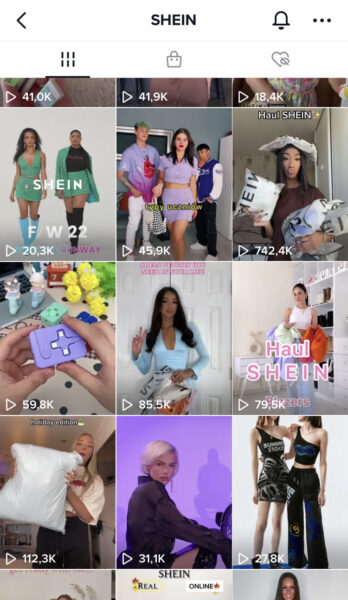
Shein uses the power of user-generated content and collaborates with influencers to show off their clothes, provide affiliate links, and give discount codes.
On their TikTok profile, you can see that between their regular product presentation videos, they also repost videos posted by those who either purchased or received items from them.
Shein hauls, in particular, are doing extremely well, as any related hashtags garner millions of views.
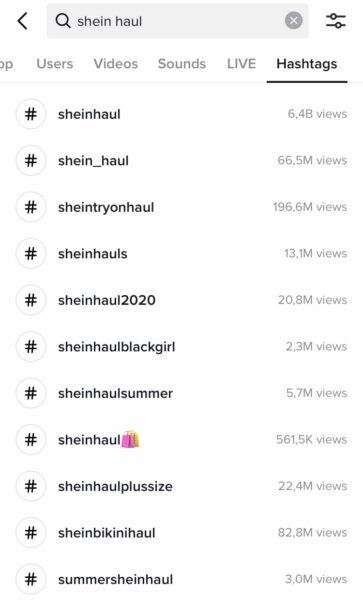
What is there to learn from Shein?
Always keep an eye out for the online world. Check what social media apps are gaining popularity, get on them, and start spreading the word about your brand.
Create interesting social media ads, hop on trends, and interact with your audience.
Shein learned to leverage social media to establish a strong bond with their Gen Z audience—and so should you.
Lesson 3: Embrace Inclusivity
In the first chapter about Nike, we touched on how Gen Z commits to supporting brands that stand for equality and social justice.
So it makes sense that they are huge advocates for inclusive advertising. Our whitepaper pointed to a 2021 report by We Are Social, in which it was revealed that “87% of Gen Z storytellers agree that ‘the media and advertising have a responsibility to be inclusive in its representation of diverse and minority identities.’”
And one of the top brands that learned how to do inclusive advertising properly is Target.
Now, just like in the case of Shein, there is a whole list of reasons why Target is so popular among Gen Z.
Its one-stop-shop nature, attractive deals, good quality-price ratio, and easily accessible store locations near college campuses are only some of the things that made this retail chain the third most mentioned brand in our survey.
But its inclusive advertising is definitely high up on the list.
Target’s commitment to inclusivity can be seen everywhere.
A quick browse through their website will show a diverse line-up of models advertising their products.
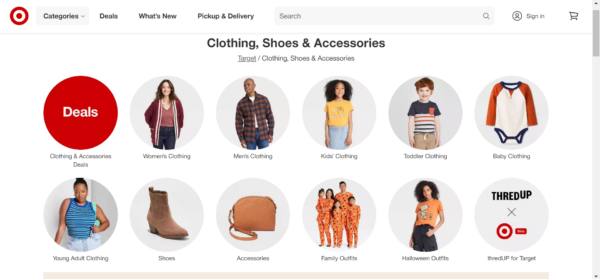
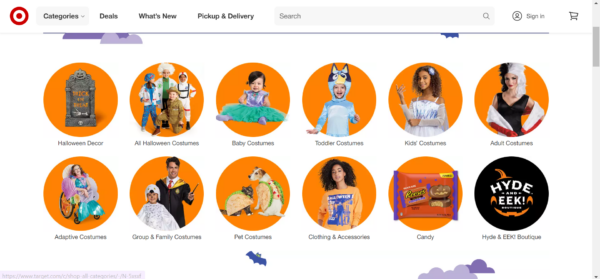
Target’s inclusive policy doesn’t stop at promotional pictures.
Their wide array of products includes adaptive clothing for people with disabilities (adults and children alike). Their Black Beyond Measure campaign highlights black-owned or founded brands that can be found on their store shelves.
In 2021, they partnered with four different high-fashion designers for an exclusive collection: Haitian-American Victor Glemaud, New York-based Rachel Comey, Israeli-born Nili Lotan, and Chinese-American Sandy Liang.
Target also pays attention to inclusivity when it comes to its employees and leadership. In March 2022, the company reported that between 2019 and 2021, it increased promotions for people of color by 62% and steadily increased promotions of women to senior leadership positions by 16%.
Inclusivity is a core value of Gen Z, and Target understands that—and so should you.
Lesson 4: Make Them an Offer They Can’t Refuse
Through the survey conducted by our team for the whitepaper, we saw that although the majority of Gen Z have a stable income, they are not impulsive buyers.
48,79% of our respondents said they buy something when needed, while 32,68% said they make a purchase when there’s a sale.
Gen Z is careful about how much they spend and where their money goes—and Walmart understands this.
Walmart has always been known as the place to go when you’re hunting for a good deal. Remember all those times you went in to buy one item and came out with 50?
Walmart understands that its biggest selling point is its low prices, and they make sure to remind you of that.
This is the first thing I saw when I went on Walmart’s website today:
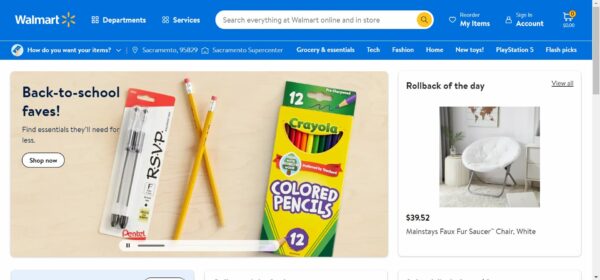
Already on the homepage, I saw a header for back-to-school essentials ‘for less’ and, right next to it, a rollback of the day. Walmart Rollbacks are items whose prices are reduced temporarily to attract more sales.
I can tell you that if I saw some quality pens at a good price and then a pretty white chair that I could use while working on my laptop on sale, there’s a high likelihood I’ll take the bait.
And if I find it tempting, a Gen Z student about to start school or college could feel the same.
Walmart understands this so well that they put their low prices at the forefront of their marketing.



And their strategy is working.
Statista reported that “in the fiscal year ended January 31, 2022, Walmart’s revenue amounted to approximately 573 billion U.S. dollars worldwide.”
Walmart managed to successfully keep afloat even during the pandemic, with Chief Executive Doug McMillon crediting the company’s financial success to their low prices, according to The Wall Street Journal.
What is there to learn from Walmart when it comes to advertising to Gen Z?
Whatever you’re selling, do the Walmart way, and make them an offer they can’t refuse.
Lesson 5: Always Optimize Your Website (Especially on Mobile)
Gen Z is the first generation of digital natives.
According to our survey results, 55,15% of our respondents said they usually shop online. And as noted in lesson #2, they spend 1-3 hours daily on social media alone.
It’s clear that if you want to reach a whole generation of digital natives, you have to approach them in a place that’s familiar to them: online.
Besides increasing your social media presence and creating professional mobile ads, you want to make sure your website is always optimized.
Amazon knows this.
Now, it’s almost impossible for any business to be as huge as Amazon. Warehouse Ninja reports that Amazon has close to 200 facilities around the world, and they range between 6,000 and 8,000 square feet.
That’s a lot of stuff.
But what makes Amazon a master in retail isn’t just their wide variety of products—it’s how easily you can find them.
Because Amazon’s online store is very well optimized.
Their website (desktop and mobile versions) and mobile app are neatly organized. The products are divided into categories with catchy titles depending on their new arrivals, current deals, ongoing trends, or seasonal favorites.
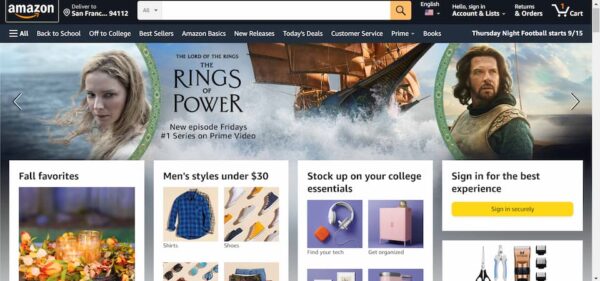
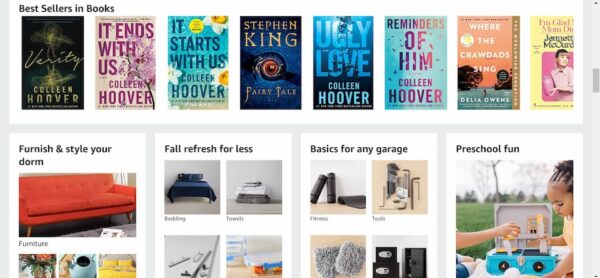
If you open the website in your mobile browser, you’ll find that the loading speed is just as fast as it is on a desktop, and it’s very easy to scroll.
On their app, apart from the usual search bar, there is also a feature called Amazon lens, through which you can use your phone camera to find the products you need even easier.
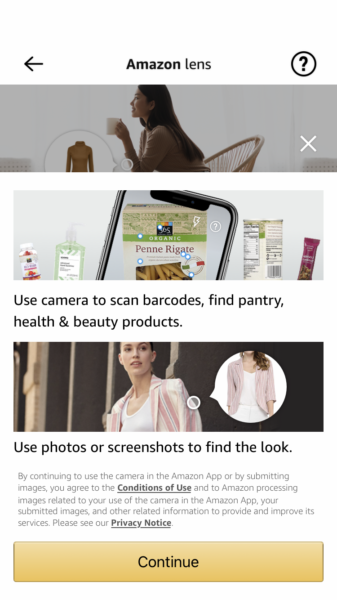
So, what can you learn from Amazon?
Even if your business is much smaller than Amazon’s, you can still create a pleasant shopping experience for your Gen Z customers by simply ensuring that your website (the desktop version, mobile version, or app) is organized, intuitive, easy to navigate, and loads fast.
Lesson 6: Establish & Maintain Trust
In our survey, we wanted to know the characteristics that Gen Z likes most when it comes to ads, so we gave them five statements and asked respondents to rank them in order of importance.
Most of them picked ‘I like an ad from a trustworthy brand’ as their number one.
So it’s no surprise that every marketer or advertiser you ask will tell you that making your customers trust you is key to becoming a successful business.
Although this is a true statement, it’s also rather vague.
What exactly is trust? How do you even get to a point where your customers trust you?
To understand it better, we have to look at Apple.
Although it was founded all the way back in 1976, Apple had a hard time catching up with Microsoft for the first 20+ years. It wasn’t until the release of the iPod in 2001 and the iPhone in 2007 that the brand became the tech giant that it is today.
In an era in which the MP3 player was rising in popularity, Apple brought the iPod.
It was the perfected version of the MP3 player. It came with an easy-to-navigate interface, colorful yet clean designs, bigger storage capacity, and the possibility to transfer pictures and videos.
In short, the iPod was the new kid on the block.
Later, Apple changed the game again with the iPhone.
When the Blackberry was starting to show its cracks, Apple came in with a smartphone that had an easier interface, a cleaner design, a quicker way to send and access emails, and a more efficient way to navigate the internet. Plus, it had iTunes, which meant you didn’t even need an iPod anymore.
Many say that the iPhone was what killed the iPod, but if we look at this from Apple’s perspective, it’s better if you’re the one who kills your product and not your competitor.
Throughout the 2000s, with the help of the iPod and especially the iPhone, Apple became synonymous with technology, innovation, quality, and even fashion.
This allowed the company to establish trust with its audience.
Today, people trust that Apple knows what it’s doing. When the brand releases a new iPhone, they trust that it’s going to be the best one yet. When the brand comes out with a new feature for their iPhones, people know it will be useful.
When the brand releases any kind of other products, such as the MacBook Air or the fairly recent AirPods, people know that it will work great and look good.
People know it, competitors know it—Gen Z certainly knows it.
So if you want to establish trust between you and your Gen Z audience, see how you can become the Apple of your industry.
Conclusion
Marketing to Gen Z isn’t rocket science.
However, just like with any type of target audience, there are a few things you need to learn about them if you want to establish a connection.
It takes some work and patience. But as we’ve seen with these six brands, it’s worth it.
If you’ve found this article helpful and wish to see the full results of our survey, as well as inputs from experts.

